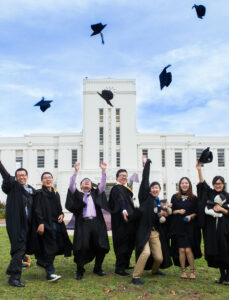MANY COUNTRIES CLOSED their borders in response to the COVID-19 pandemic in 2020. For the 1.5 million or so students from the People’s Republic of China (PRC) enrolled in overseas education institutions, these unprecedented border closures led to multiple crises. Many were forced to reconsider and renegotiate their plans for life and study, their expectations of both their host and their home countries, as well as their identities, loyalties, and sense of belonging.
Australia provides an ideal case study for an examination of the behaviour and decision-making of Chinese students overseas during a period of global crisis. International education was Australia’s fourth-largest export in the 2019–2020 financial year. According to data from the Australian Department of Education, Skills and Employment, the number of international students in Australia increased from 153,372 in 2000 to 876,399 in 2019.1 That year, Australian universities earned more than AU$10 billion in international student tuition fees — a record 27 percent of their revenue.2 As Professor Andrew Norton from The Australian National University summarised, international students ‘filled the gap’ during the previous two decades, as Commonwealth funding for higher education continuously dropped.3 In the 2019 calendar year alone, international education contributed over $40 billion to the Australian economy.4 During their study in Australia, many international students are also consumers and tourists.5 They also make valuable intangible contributions, by increasing ethnic, social, and cultural diversity within and beyond Australian university campuses.
Chinese students make up more than one-quarter of the country’s international student population. According to Department of Education, Skills and Employment data, there were 653,539 international students enrolled in Australian education institutions between January and July 2020. Among these, 176,397 students, or approximately 27 percent, came from mainland China.6 Before the pandemic, Chinese international students contributed about 10 billion dollars to Australia’s economy annually through tuition fees and spending. These vast numbers have shaped Australian campuses in ways that have become controversial in recent years (see China Story Yearbook: China Dreams, Chapter 9, ‘Campus Conundrums: Clashes and Collaborations’). However, they have also brought benefits, including strengthening people-to-people links between the two countries, which are maintained by various means including through China-based alumni associations.7
Prior to the pandemic, Australia was closely linked with China through strong economic ties and extensive flows of people in both directions. China is Australia’s largest two-way trading partner in goods and services, accounting for more than one-quarter of Australia’s trade with the world; before the pandemic, China was Australia’s largest inbound market in terms of visitor arrivals and total visitor spend.8 However, Australia’s close political and military relationship with the United States and growing political frictions with China have complicated the social circumstances of Chinese students in the country. On top of the challenges posed by substantial differences in language, culture, values, governance, and politics, these students have also suffered from a regrettable rise in racist abuse in Australia. After the pandemic, for many of these students the situation become even worse.
Before the Pandemic
Despite the rapid development of the Internet and other technologies for distance learning, the experience of studying abroad means much more than just education to many international students; it allows them to observe, understand, and reflect on different values, opinions, and lifestyles first-hand. For students from China, studying in Western countries like Australia, it also means they can obtain free access to information and resources unavailable or censored in their home country. To some students, these opportunities to access new perspectives help them broaden their horizon and enrich their understanding of the world and themselves. As China has become more prosperous, foreign universities have courted fee-paying Chinese students, while the Chinese government has simplified procedures for its citizens to study abroad. In 1999, there were already more Chinese students studying abroad than from any other country. In 2013 alone, China sent 712,157 students to study overseas — almost four times as many as India, the world’s second-biggest source country for international students in that year.9 The growth in the number of Chinese international students has been decelerating since 2013, along with the slowdown of the Chinese economy, although China remains the world’s biggest source country for international students by a significant margin. In 2018, 662,100 students left China to study abroad — 8.8 percent more than in 2017.10 As of 2018, in Australia, almost two of every five international students enrolled in an institution of higher education were from China.11
Although there are criticisms of various aspects of quality control in Australia’s international education,12 empirical studies reveal the experience of studying in Australia has long-term benefits for Chinese international students. For example, according to a 2016 study focusing on a leading Australian university, the majority of highly skilled returned graduates from the English-speaking environment ‘retain an advantage in China’s crowded graduate labour market’ even if the situation has grown significantly more competitive than it was in former times, when graduates of well-regarded foreign universities could quickly gain access to prestigious positions.13 Intercultural competence and the diversification of social networks are of value back in China more generally.14 For many, studying abroad is also a means of pursuing what Vanessa Fong describes as ‘social, cultural, and sometimes legal citizenship in the developed world’.15
The Re-Bordered World

Graduates from English-speaking countries ‘retain an advantage in China’s crowded graduate labour market’ Source: ANU Image Library, Flickr
In an effort to prevent the spread of COVID-19, on 1 February, Australia introduced strict travel bans prohibiting the arrival of non-citizens and non-residents travelling from anywhere in China. This expanded a previous ban on travel from Hubei province, the epicentre of the COVID-19 outbreak at that time. Approximately two-thirds of Australia’s Chinese students were now ‘stuck at home’.16 In early March, I surveyed approximately 150 Chinese international students who were enrolled in a unit that I was teaching. Sixty-three students reported that they were physically in Australia, while fifteen students were on their way to Australia via a third country; before the 20 March closure, it was legal for them to enter if they stayed fourteen or more days in a third country. Most of the remaining students were still in mainland China.17 Australia’s travel ban was extended to other countries, including Iran, South Korea, and Italy, and then, on 20 March, to all non-citizens and non-residents regardless of their place of departure. In October, the Australian government indicated that the border closures might remain in place through to the end of 2021.18
On 24 August, 27 percent of the 307,038 student visa–holders enrolled in Australian higher education institutions remained outside Australia.19 As of 1 November, just over half of the 85,612 Chinese international students enrolled in Australian universities and schools remained offshore.20 Although many of these students continued their study through remote learning, they lost access to many of the opportunities associated with studying abroad, which, under normal circumstances, would have been indispensable components of their international education. The indefinite nature of the travel bans imposed extensive uncertainty on them as well. It added mental, physical, and financial pressures on those Chinese (and other international) students caught outside the country, as well as those trapped in Australia, who suffered reduced opportunities for part-time employment and were separated from their families. Many Chinese international students experienced three crises simultaneously.
Crises of Study, Life, and Direction

Many Chinese international students made the choice of flying back to Australia via a third country, such as Malaysia or Thailand.
Source: Izzie Renne, Unsplash
Beginning in late February, the world that was once closely connected by transnational and transcontinental flights fragmented into fortified national islands. Travel restrictions, quarantine requirements, and the grounding of most commercial passenger flights meant that most people were stuck where they were when the new rules were put in place. After Australia closed its borders, many Chinese international students had to make a painful choice between flying back to Australia via a third country or staying in China until further notice. Entering via a third country, such as Malaysia or Thailand, made the journey expensive and stressful. Some of my students who eventually made it back to Australia under those circumstances felt that having to layover in another country put them at significantly higher risk of catching COVID-19 in these third countries than if they had been allowed to fly directly to Australia from areas in China that were mostly free of COVID-19. Indeed, in early March 2020, a Chinese international student at the University of Queensland tested positive for the virus shortly after arriving in Brisbane following a two-week stay in Dubai.21
The stress and fear were such that many of these students geared up with personal protective equipment including masks and, in some cases, full hazmat suits on both legs of their journey. One student told me that he and many other Chinese international students on the same plane refused any drink or food, despite the flight lasting for ten hours. In addition, these students could not be sure that Australia’s border control measures would not change while they were in a third country, where they typically had no contacts or social support. Some of my students learned the Australian government had shut the border entirely on 20 March from reading the news online in their Malaysian hotel rooms. One told me over the phone: ‘It’s a shame; I totally lost with this gamble.’
After the border closure, the Australian higher education sector successfully lobbied China to relax its Internet restrictions to allow the 100,000-odd students stranded at home to study online more smoothly.22 Australian universities also provided online support for their students and allowed those in China to suspend their degree courses until the border reopened. Despite these efforts, many students who were not able to make it back to Australia experienced considerable pressure and anxiety due to the lack of familiarity with teaching methods such as ‘Zoom classes’ and the uncertainty around the policy development regarding border restrictions.23 Learning purely online was a novel experience for Chinese international students; many felt the loss of community keenly and complained that the quality of teaching and learning was not the same.24 Some offshore students could not keep their cameras on during classes due to insufficient bandwidth and hence had limited chances to participate in class discussion. Academics and their professional associations in Western countries have also raised concerns over the security issues of teaching certain China-related topics online, fearing that data generated from Zoom and other online teaching software may be vulnerable to surveillance by the Chinese state.25 For many of them, online classes did not feel like value for money, given the much more expensive tuition fees they have to pay in comparison with domestic students.26

Too many Chinese international
students, online classes did not feel like value for money.
Source: Chris Montgomery, Unsplash
Take the tuition fee for an undergraduate course in social sciences at the University of Melbourne, for example. In 2020, a domestic student typically paid AU$6,684 for a full-time academic year,27 whereas an international student had to pay AU$33,824 for the same educational opportunities.28 Nor could online teaching provide students the kind of cultural competencies that come from ordinary experiences like visiting weekend markets or making friends with Australian students — experiences that Zhichen Ye, a master’s student at the University of Melbourne, noted in her study of student experiences during the pandemic.29 One student interviewed by Ye remarked that the Internet ‘always fails to reflect a more intangible and diverse side of Australian life’.30 Her friend, who attended classes via Zoom from China, felt a sense of loss due to the ‘lack of personal experiences’ in Australian society.31 Some of Australia’s most prominent educators have also acknowledged that, although remote learning can keep some international students enrolled, it is ‘a stopgap, not a solution’, as it is unable to give students ‘the full experience’.32
For the many Chinese international students stuck at home, the future was full of uncertainty. Without knowing when it would be possible to return to Australia, they found it challenging to make meaningful plans for their study or life more generally.33
A Crisis of Expectation
Even for those students who managed to enter Australia before the border closure on 20 March, life was not easy. Far from home and amid new challenges, many reported feeling anxious, depressed, and lonely. Some struggled to understand the ever-evolving official advice and regulations related to the pandemic and lacked the information or linguistic confidence to access counselling services.34 Worse, neither their host nor their home countries considered them a priority for financial help or other support.
Although international students in Australia are often perceived as wealthy, many have to rely on part-time jobs to subsidise their living expenses.35 Far from their support networks and relatively unfamiliar with the Australian legal system, international students have long been vulnerable to underpayment, sexual harassment, and other types of employer exploitation.36 The pandemic significantly exacerbated existing and chronic problems.37 What’s more, according to the results of a comprehensive survey of 6,000 international students and other temporary visa-holders in Australia conducted in mid-2020, 70 percent of respondents, most of whom worked in heavily casualised industries such as hospitality, lost their job or saw most of their hours cut during the year.38
As temporary visa-holders, international students in Australia were denied access to federal government support packages such as JobSeeker and JobKeeper. Prime Minister Scott Morrison explicitly told international students who were facing economic hardship during the pandemic to ‘return to their home countries’, even though this was not always a realistic or feasible option.39 The lack of support from the Australian government left many international students feeling abandoned.40 As a result of their experience, almost three of every five participants in the comprehensive survey cited above reported they were less likely than before to recommend Australia as a study destination.41

Chinese films like Wolf Warrior 2 focused on the Chinese government’s extraction of citizens from crises abroad.
Source: Celinahoran, Wikimedia
Many Chinese students were determined to continue living and studying in Australia despite the pandemic because they had already made substantial non-refundable investments in the experience. Even those who wanted to return home had limited options. The Civil Aviation Administration of China (CAAC) implemented strict regulations on the frequency of international flights departing from and arriving in China. Beginning on 29 March, each Chinese airline could maintain only one route to any specific country with no more than one flight per week. Foreign airlines were similarly limited to one route to China with no more than one weekly flight. In the case of Australia and also beginning in late March, the CAAC allowed only three direct routes to operate all departing from Sydney.42 Chinese students in Australia who wanted to return home faced costly airfares, and limited seats meant many could not get a ticket at all.43 Some students and their parents, influenced by popular Chinese films like Wolf Warrior 2 and Operation Red Sea that focused on the Chinese government’s extraction of citizens from crises abroad, firmly expected their government would bring them home — especially given that flying students home would be considerably less challenging than plucking kidnapped citizens from the clutches of terrorists in the middle of a war zone.44 On 16 March, the parents of 166 Chinese international students enrolled in British primary and secondary schools collectively petitioned the PRC Embassy in London to arrange chartered flights to bring their kids home.45 Two weeks later, the parents of 200 students in the New York area wrote an open letter to the Chinese Ambassador to the United States with a similar request.46 The Chinese government did arrange chartered flights to repatriate some 180 secondary school students from the UK who were not living with their parents;47 however, many other students felt abandoned by the ‘motherland’ when the Chinese government failed to meet their expectations. This reportedly came as a particular shock to those who had fervently and vocally supported the Chinese Communist Party in the face of public criticism while overseas.48
A Crisis of Belonging
Many Chinese international students, regardless of their individual political views, were put in awkward situations created by increasing diplomatic tensions between China and a range of countries, including the US and Australia, in 2020. These tensions existed before the pandemic but escalated during the year (see Chapter 7, ‘US–China Relations: A Lingering Crisis’, pp.191–203; and Chapter 8, ‘The Sino-Indian Border Crisis: Chinese Perceptions of Indian Nationalism’, pp.223–237). The Chinese government accused Australia of ‘hurting the feelings of the Chinese people’ by calling unilaterally for a ‘weapons inspection–style’ investigation into the origins of the virus.49 The Chinese Ministry of Education issued to Chinese students who were considering studying or continuing their studies in Australia an official alert about COVID-19-related health risks and racism.50 As tensions escalated, Beijing increasingly accused Canberra of anti-China sentiment and actions.51
Coinciding with the diplomatic tit-for-tat was a ‘growing public polarisation about the presence of international students in local communities’ in popular host countries. 52 According to a survey conducted by Universities UK, almost one in every five people in the UK wished universities had fewer international students. A survey conducted by The Australian National University showed that 46 percent of the public felt that ‘universities should be educating fewer foreign students and more domestic students’.53 Australia’s initial travel ban, which was China-specific, also contributed to a sense that its response to the pandemic was tinged with racism.54 Like many Chinese Australians and others of East Asian appearance, more than half of the Chinese students who stayed in Australia during the pandemic reported experiencing direct and explicit racial discrimination, including verbal and physical abuse.55 (See Chapter 6, ‘The Future Repeats Itself: COVID-19 and Its Historical Comorbidities’, for a historical overview of pandemics and anti-Chinese racism.) Although some Chinese international students defended Australia as a safe destination for education,56 many became disillusioned because of the racism, the lack of government support and a sense of exploitation, with one respondent in the survey saying she felt Australia had treated her like a ‘cash cow’.57
Yet many Chinese students who managed to return home also found themselves unwelcome there. On Chinese social media, some commentators accused them of being unpatriotic for paying taxes to other countries and not making contributions to China’s development.58 Others viewed them as threats to China’s success in controlling the spread of COVID-19, despite the strict quarantine regime.59 Influential media, such as China Youth Daily, criticised these unfair comments while highlighting the efforts that Chinese embassies and consulates had made to support Chinese students in host countries.60 However, according to Zhaoyin Feng, writing for the BBC about the 360,000 Chinese students in the US, many Chinese international students felt they were ‘unwanted’ at home and were ‘getting the short end of the stick’ from both their host country and China.61
Conclusion
Prior to 2020, Chinese international students in Western countries such as Australia were at the core of international education mobility. Their experience shows how Chinese citizens overseas are under increasing pressure to pick a side between their home and host countries, as diplomatic clashes and economic conflicts between China and the West become more frequent and fierce. By treating these students better — integrating them into virtual communities, helping with cross-border travel and embracing inclusivity and multiculturalism — Australia should be able to attract and retain large numbers of Chinese international students in a post-COVID world.60 However, the uncertainty and negative experiences of overseas Chinese citizens during a year of crisis, combined with political tensions, may destroy not only the capability but also the aspiration for international education mobility — and mobility more generally — among citizens of the PRC.



